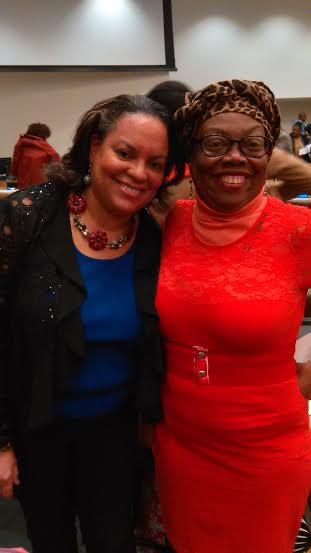"On behalf of the Nova Scotia government, I sincerely apologize to Mrs. Viola Desmond’s family and to all African-Nova Scotians for the racial discrimination she was subjected to by the justice system in November 1946. The arrest, detainment, and conviction of Viola Desmond is an example in our history where the law was used to perpetuate racism and racial segregation - this is contrary to the values of Canadian society. We recognize today that the act for which Viola Desmond was arrested, was an act of courage, not an offence."
Excerpt from a posthumous apology by the Premier of Nova Scotia on April 15, 2010
Viola Irene Davis Desmond would have been 96 years old when the apology was made and a posthumous pardon was granted in 2010. She had been born Viola Irene Davis on July 6, 1914 in Halifax, Nova Scotia and transitioned on February 7, 1965 in New York City. Viola Irene Davis was one of 15 children born to James Albert Davis and Gwendolyn Irene Davis (née Johnson.) The official apology offered posthumously by the Premier of Nova Scotia on Thursday, April 15, 2010 was a long time coming. The apology was 64 years overdue from an incident that took place on November 8, 1946.
On November 8, 1946 the 32 year old African Canadian businesswoman was arrested at the Roseland Theatre in New Glasgow, Nova Scotia. At 32 years old Viola Desmond was a successful entrepreneur and owner of a beauty parlour and beauty school. On November 8, 1946, Desmond was traveling on business from her Halifax, Nova Scotia home when she experienced car trouble in New Glasgow, Nova Scotia. After taking her car to a garage she decided to see a movie at the Roseland Theatre. She bought a ticket for the main floor of the theatre, unaware of the theatre’s policy that the main floor was a “Whites only” seating area because unlike the blatant White supremacist Jim Crow laws of the USA, there were no “Whites” and “Colored” signs posted and she did not know that African Canadians were relegated to the balcony. When Desmond was ordered to move she replied that she could not see from the balcony, that she had paid to sit on the main floor and that she would not move.
The manager left the theatre and returned with a policeman and the two burly White men dragged the slim, 4’ 11” Desmond out of the cinema, injuring her in the process. The White supremacist culture in Canada is subtler than in the USA and Desmond was charged with defrauding the government of one cent instead of the reality of “sitting in the White people’s section” of the cinema.
She spent the night in jail in the same block as male prisoners. The following day she was tried and found guilty of tax evasion. The sentence was 30 days in jail or a fine of $20, plus $6 to the manager of the theatre. She paid the fine and then challenged the guilty verdict in the Supreme Court of Nova Scotia. Desmond was supported in her struggle for justice by fellow African Canadian and civil rights activist Carrie Best who publicized the case in “The Clarion” newspaper. “The Clarion” was established in 1946 and was the first African Canadian owned and published newspaper in Nova Scotia.
In spite of their efforts and the support of the Nova Scotia Association for the Advancement of Coloured People (NSAACP) the Supreme Court of Nova Scotia upheld the guilty verdict. Desmond remained guilty of defrauding the government of one cent until April 15, 2010 when she was granted a posthumous pardon. Viola Desmond’s case did not receive much publicity outside of Nova Scotia, unlike the similar case of Rosa Parks to whom she is compared although her struggle took place more than 9 years before Parks’ case. Desmond’s story has been told in several books including “Sister to Courage” published in 2010 by Desmond’s younger sister Wanda Robson.
Desmond was honoured with a Canadian postage stamp, her name on a ship and in 2018 her image will appear on the Canadian 10 dollar bill. In spite of this most Canadians know more about Rosa Parks than they do about Viola Desmond. This is because of the covert/undercover nature of Canada’s White supremacist culture and the myth of a successful Canadian multiculturalism.
The history that is taught in the education system is Eurocentric not multicultural. We know about the enslavement of Africans in the USA since it is well documented but in Canada a discussion about the enslavement of Africans is mostly about those who fled slavery in the USA and sought refuge in Canada. We do know the names of some of the Africans who resisted their enslavement in Canada including Chloe Cooley, Marie Joseph Angelique, Peggy Pompadour and others whose names appear in “for sale” advertisements and bounty hunter type advertisements. Some Africans enslaved in Canada fled south of the border to states in the USA where slavery was abolished (e.g. Vermont 1777) before slavery was abolished in Canada on August 1, 1834.
The resistance of enslaved Africans contributed significantly to the abolition of slavery. Viola Desmond did not win her case but her fight encouraged successive generations to continue the fight. In the 21st century the struggle continues on various fronts and freedom fighters emerge regularly. Like Desmond they may not win their battle but they inspire successive generations to continue the struggle. Black Lives Matter!!





No comments:
Post a Comment